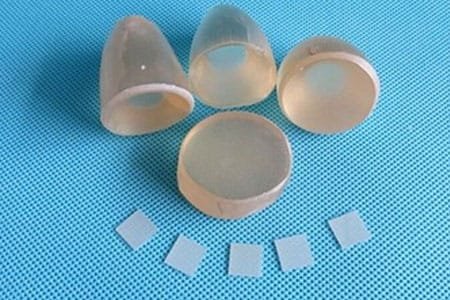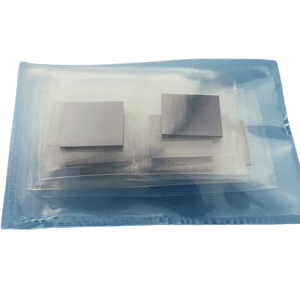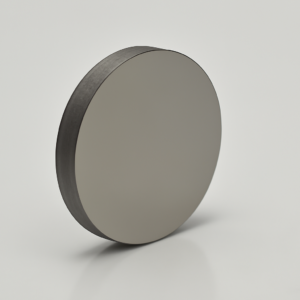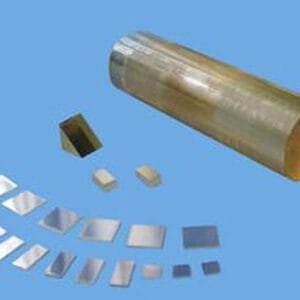Strontium Titanate Substrate (SrTiO₃)
Strontium Titanate (SrTiO₃) is a high-quality single crystal substrate widely used in thin film deposition and advanced material research. Renowned for its excellent lattice matching properties, it is ideal for applications involving high-temperature superconductors, ferroelectric thin films, and optoelectronic devices. Its exceptional dielectric properties make it indispensable for high-performance electronic components.
Key Physical Properties
| Property | Value |
|---|---|
| Material | SrTiO₃ |
| Crystal Structure | Cubic (at room temperature) |
| Lattice Constant (Å) | a = 3.905 |
| Growth Method | Verneuil method |
| Melting Point | 2080℃ |
| Density | 5.12 g/cm³ |
| Hardness | 6 (Mohs) |
| Dielectric Constant | ε = 300 (at room temperature) |
| Color and Appearance | Transparent to light yellow polished surface |
| Chemical Stability | Highly stable under various conditions |
| Key Feature | Excellent lattice match for thin film growth |
Specifications
- Size: 10×3 mm, 10×5 mm, 10×10 mm, 15×15 mm, 20×20 mm, Dia 1”, Dia 2”
- Thickness: 0.5 mm, 1.0 mm
- Polishing: SSP or DSP
- Orientation: <100>, <110>, <111>
- Redirection Precision: ±0.5°
- Edge Redirection: 2° (special 1° available)
- Angle of Crystalline: Custom sizes and orientations available
- Surface Roughness (Ra): ≤5Å (5µm × 5µm)
Packaging Details
TFM ensures that Strontium Titanate substrates are packaged in class 100 clean bags or wafer containers within a class 1000 clean room, maintaining product quality and cleanliness.
Explore superior Strontium Titanate Substrates (SrTiO₃) from TFM for high-performance thin film applications and advanced research.





Reviews
There are no reviews yet.